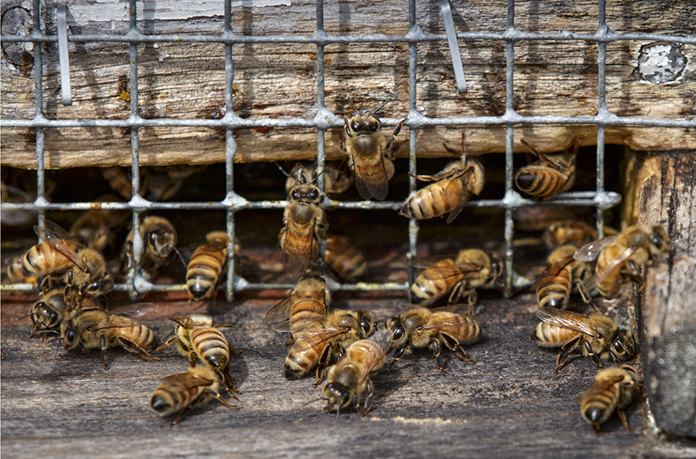
Washington (AP) – There’s a glimmer of hope for America’s ailing honeybees as winter losses were the lowest in more than a decade, according to a U.S. survey of beekeepers released Thursday.
Beekeepers lost 21 percent of their colonies over last winter, the annual Bee Informed Partnership survey found. That’s the lowest winter loss level since the survey started in 2006 and an improvement from nearly 27 percent the winter before.
The U.S. government has set a goal of keeping losses under 15 percent in the winter.
“It’s good news in that the numbers are down, but it’s certainly not a good picture,” said survey director Dennis vanEngelsdorp. “It’s gone from horrible to bad.”
Reduction in varroa mites, a lethal parasite, is likely the main cause of the improvement, said vanEnglesdorp, a University of Maryland entomologist. He credited the reduction in the parasite to a new product to fight the mite and better weather for pesticide use.
The 10-year average for winter losses is 28.4 percent.
“We would of course all love it if the trend continues, but there are so many factors playing a role in colony health,” said bee expert Elina Lastro Nino at the University of California Davis, who wasn’t part of the survey. “I am glad to see this, but wouldn’t celebrate too much yet.”
For more than a decade, bees and other pollinators have been rapidly declining with scientists blaming a mix of parasites, disease, pesticides and poor nutrition.
While usually hive losses are worst in the winter, they occur year round. The survey found yearly losses also down, but not quite to record levels. About one third of the honey bee colonies that were around in April 2016 were dead a year later, the survey found. That’s better than the year before when the annual loss rate was more than 40 percent.
The survey, originally started by the U.S. government and now run by a nonprofit, is based on information from nearly 5,000 beekeepers who manage more than 360,000 colonies. University of Montana’s Jerry Bromenshenk said the study gives too much weight to backyard beekeepers rather than commercial beekeepers.




